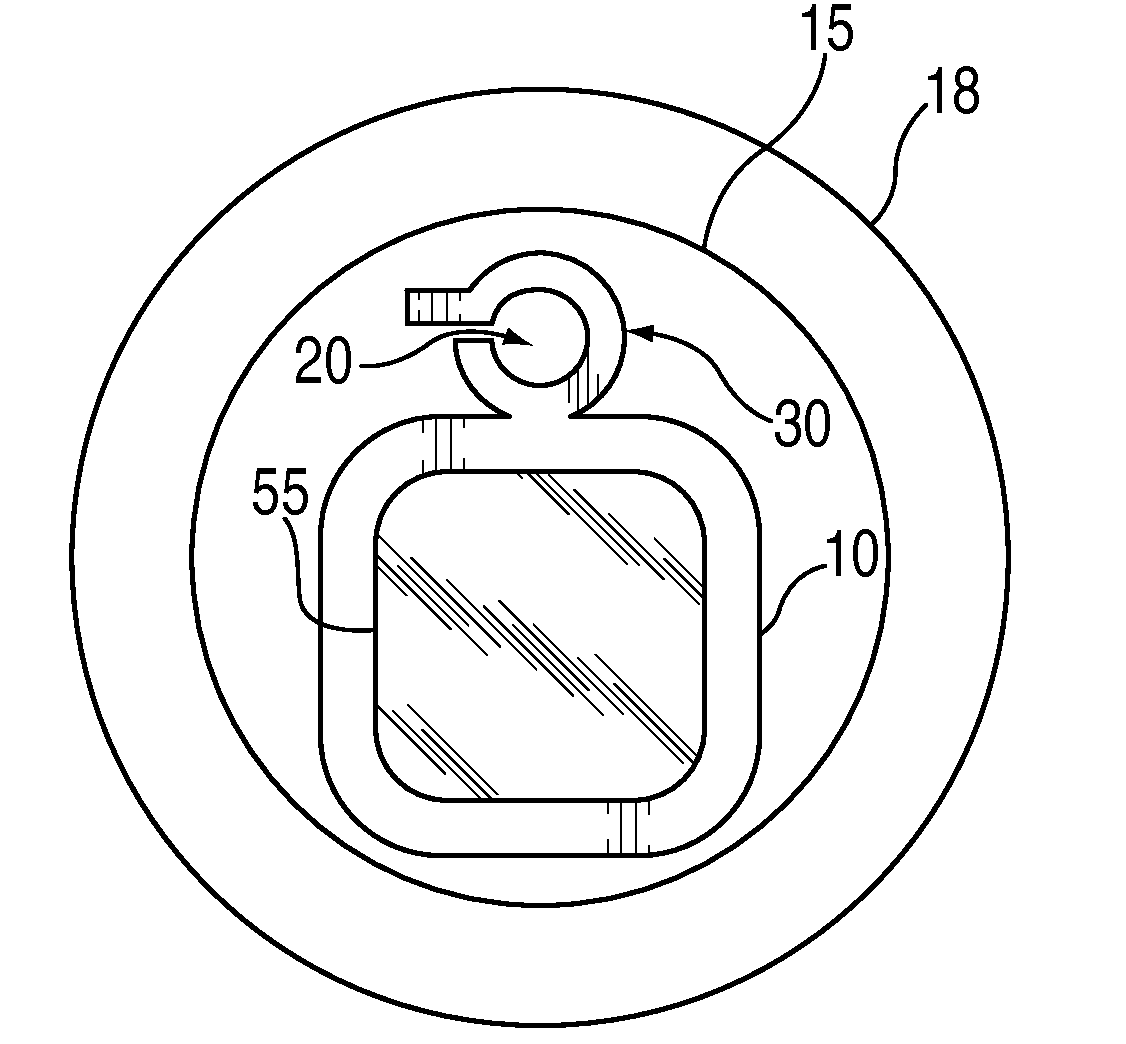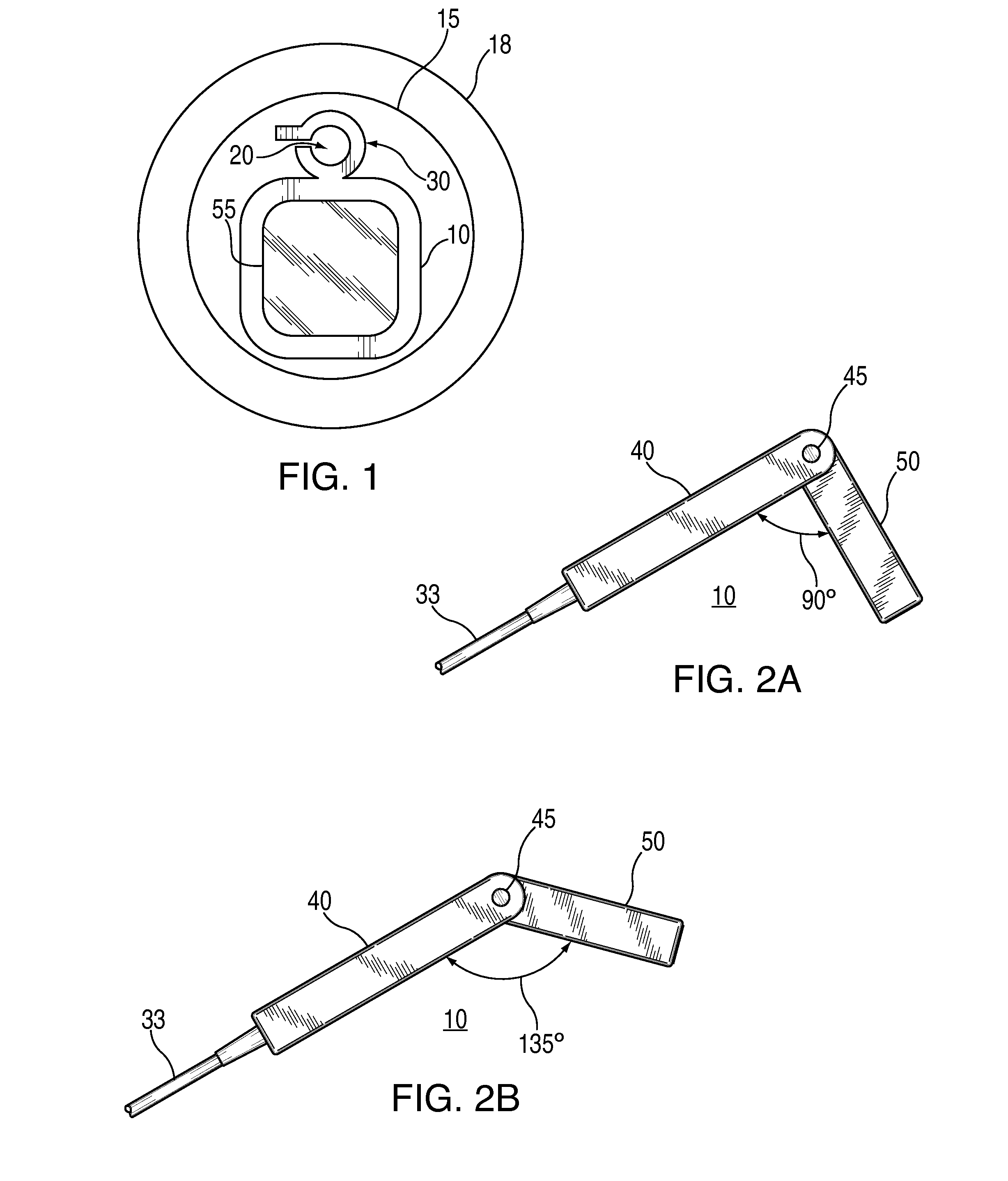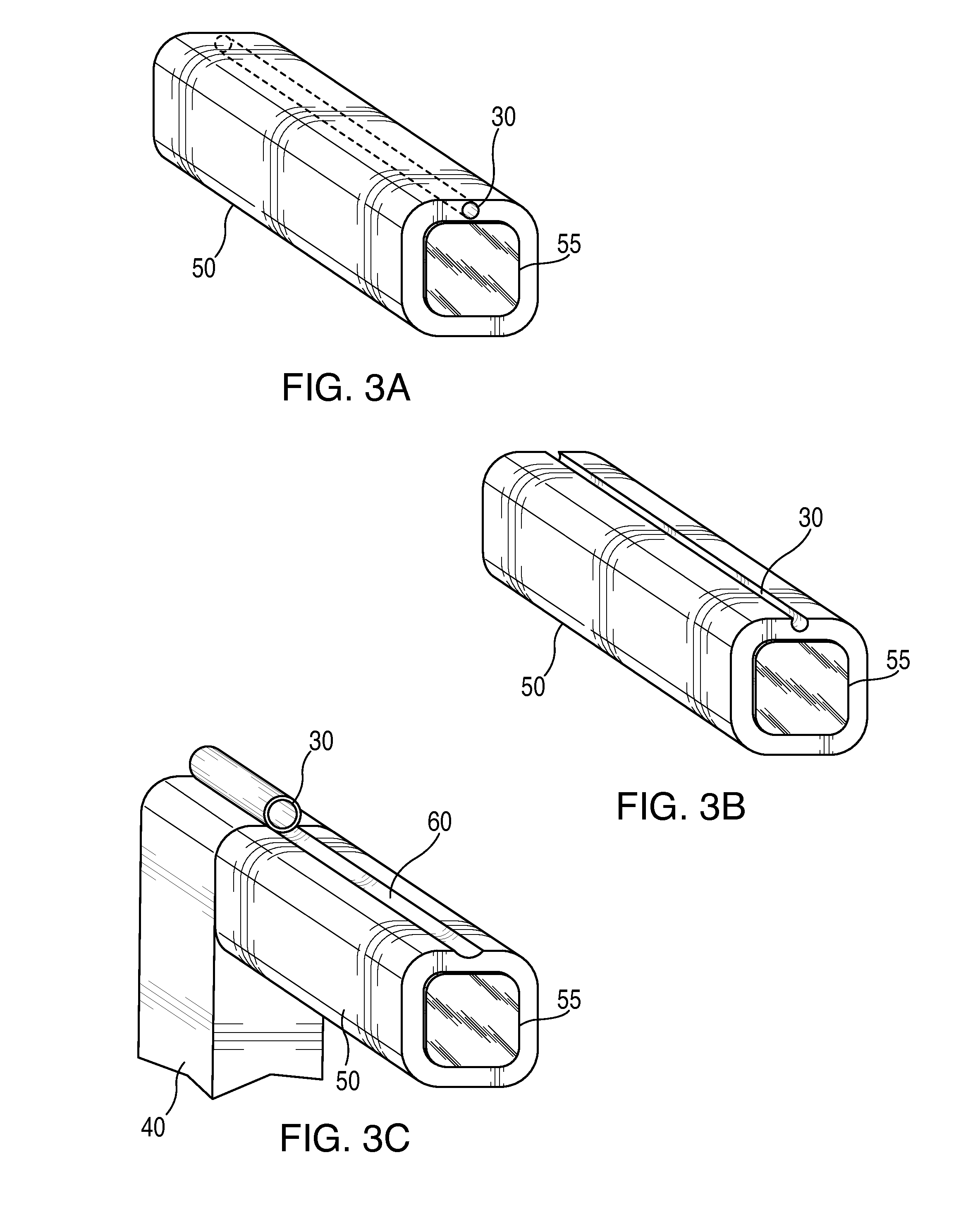Transcranial ultrasound transducer with stereotactic conduit for placement of ventricular catheter
- Summary
- Abstract
- Description
- Claims
- Application Information
AI Technical Summary
Benefits of technology
Problems solved by technology
Method used
Image
Examples
Embodiment Construction
[0028]Referring now to the drawings and in particular FIG. 1, an ultrasound transducer probe 10 for use in guiding the placement of a ventriculostomy catheter via an aperture 20 in a stereotactic conduit 30 mounted on a side of probe 10. Transducer probe 10 is dimensioned to fit within an 11 mm diameter “burr hole” (craniotomy) 15 without requiring an additional step of increasing the diameter of the craniotomy. As discussed above, 11 mm is the current standard size inner cusp diameter craniotomy for ventriculostomies, and 14 mm is the current standard size outer cusp diameter 18. Transducer probe 10 is connected to a conventional portable ultrasound machine (not shown). Conduit 30 serves as a self-contained guide-port for probe 10 for insertion of a standard ventriculostomy catheter (not shown) via a cable 33 (FIG. 2). When the head of probe 10 is placed within the craniotomy and against the exposed surface of the brain (i.e., the dura), the alignment of the phased-array ultrasound...
PUM
 Login to View More
Login to View More Abstract
Description
Claims
Application Information
 Login to View More
Login to View More - R&D
- Intellectual Property
- Life Sciences
- Materials
- Tech Scout
- Unparalleled Data Quality
- Higher Quality Content
- 60% Fewer Hallucinations
Browse by: Latest US Patents, China's latest patents, Technical Efficacy Thesaurus, Application Domain, Technology Topic, Popular Technical Reports.
© 2025 PatSnap. All rights reserved.Legal|Privacy policy|Modern Slavery Act Transparency Statement|Sitemap|About US| Contact US: help@patsnap.com



